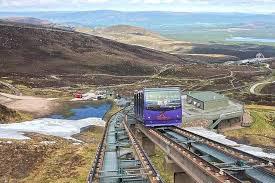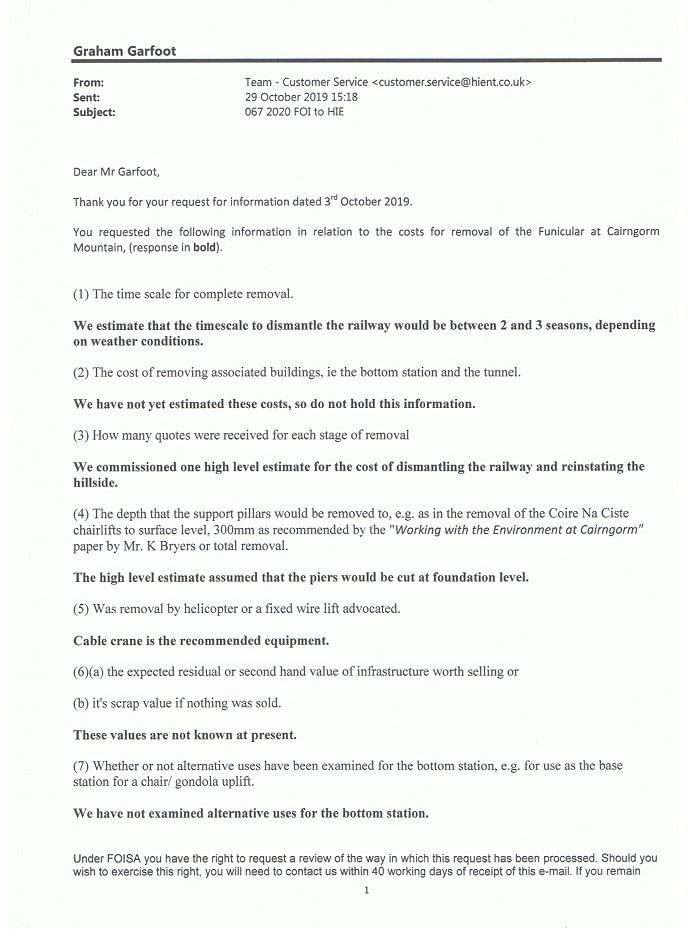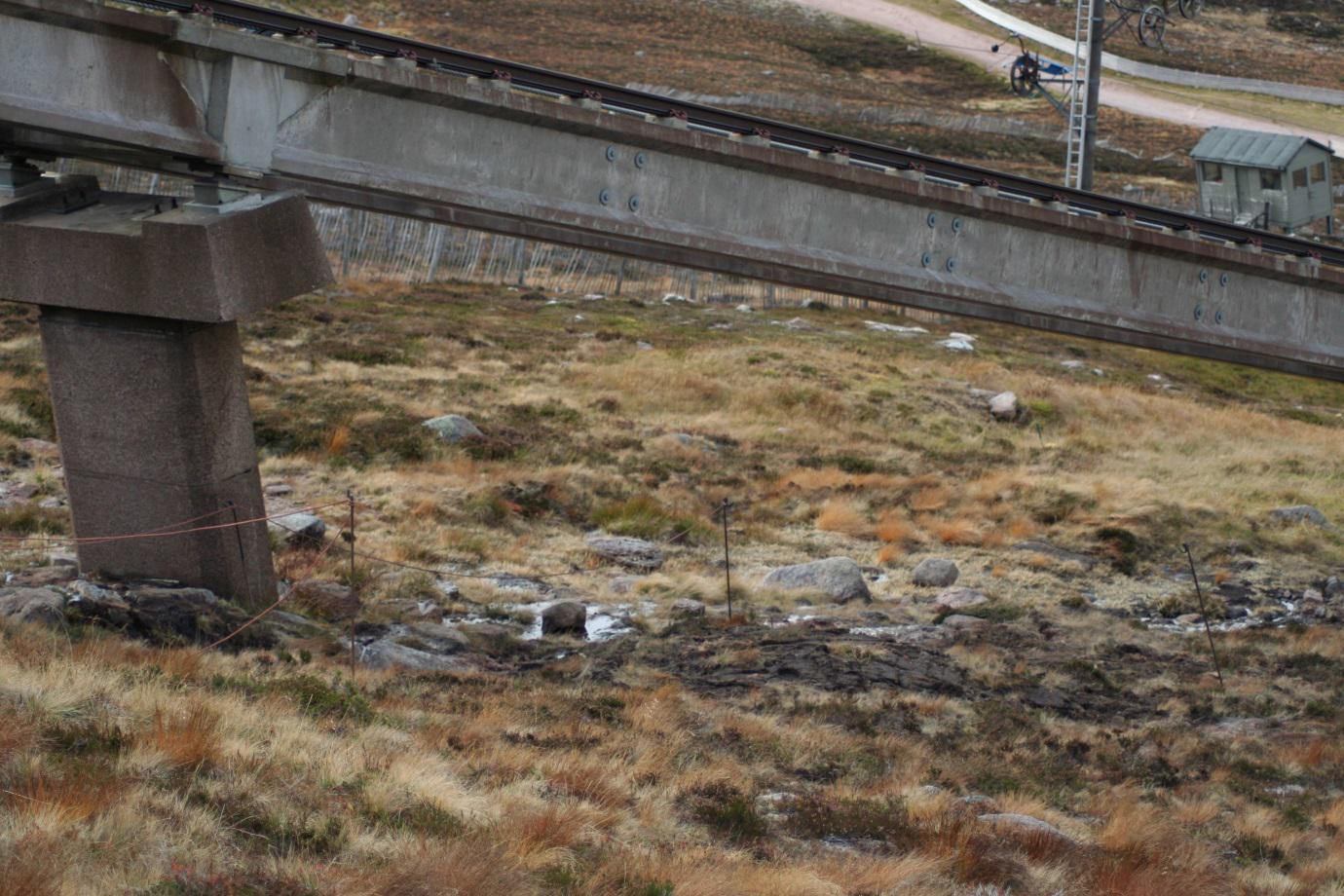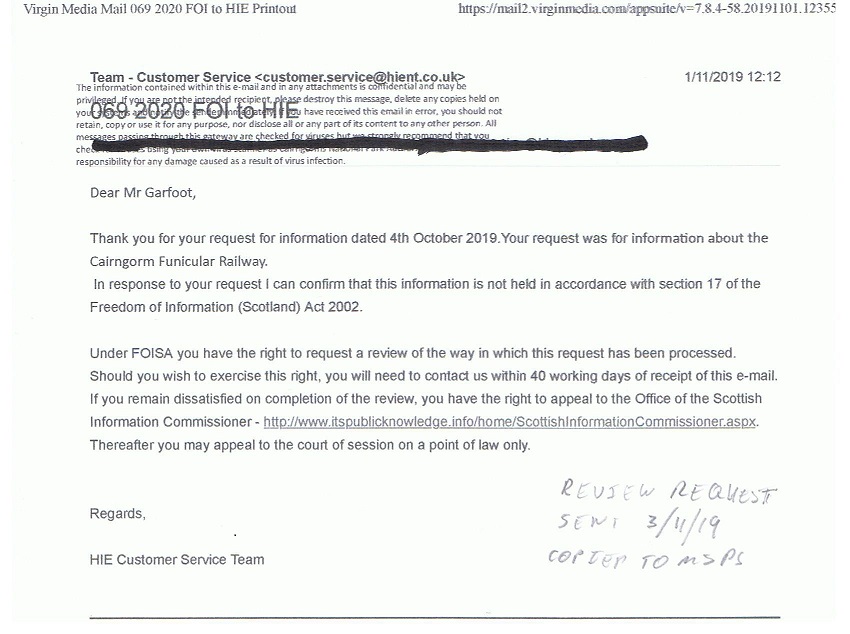 Highlands and Islands Enterprises (HIE) last month released estimates for the costs of removal and repair of the Funicular Railway (see here) which was taken out of operation 15 months ago after concerns were raised about the safety of the structure.
Highlands and Islands Enterprises (HIE) last month released estimates for the costs of removal and repair of the Funicular Railway (see here) which was taken out of operation 15 months ago after concerns were raised about the safety of the structure.
The “high end” estimate for removal is £13.3M, with a provision of £9.6M in HIE’s 2018/19 accounts towards the cost of repair. Notice that the costs being quoted by HIE are loaded against removal. We do not know what the cheapest cost of removal could be or the “high end” cost of repair. [Remember when the Funicular was built the early estimates were for a cost of £9.39M to HIE which subsequently increased by over 100% to £19.6M. ]
This post shows how seriously flawed the current two estimates are based on HIE’s response to two Freedom of Information requests.
The costs of removing the funicular

Commentary
(Q1) The time scale for complete removal.
“We estimate that the timescale to dismantle the railway would be between 2 and 3 seasons, depending on weather conditions.”
Comment. As far as I am aware in the legal agreement that requires the funicular to be removed if it ceases to operate, there is no stipulated time requirement for this to happen. So, if alternative uplift in the form of a chair/ chair/ gondola hybrid is built first, customer confidence will return, Cairngorm Mountain Scotland Ltd (CMSL) will start making a profit which will then help towards the cost of the Funicular removal.
(Q2) The cost of removing associated buildings, ie the bottom station and the tunnel.
“We have not yet estimated these costs, so do not hold this information.”
Comment. Why not? After all if they are to be removed then that should be part of the “high end estimate”. I did not include the cost of removing the mid-mountain stop in my FOI request either and HIE’s response suggests that may not be included either.
(Q3) How many quotes were received for each stage of removal
“We commissioned one high level estimate for the cost of dismantling the railway and reinstating the hillside.”
Comment. The only reason I can see for that is to tip the scales in favour of repair.
(Q4) The depth that the support pillars would be removed to, e.g. as in the removal of the Coire Na Ciste chairlifts to surface level, 300mm as recommended by the “Working with the Environment at Cairngorm” paper by Mr. K Bryers or total removal.
“The high level estimate assumed that the piers would be cut at foundation level”.
Comment. Parkswatch has covered the effect that the Funicular build may have had on subterranean water courses (see here), so total removal as proposed by HIE could alter them again, doing more damage to the mountain environment.
-

Photo of support pillar courtesy of Save the Ciste
The photo above may result from such a change in a water course. Removing the pillars to foundation level also increases costs as material to infill the holes left behind will have to be brought in from other areas. The sensible option is therefore to remove piers to sufficient depth, about 300mm, for easier ground re-instatement at a greatly reduced cost.
(Q5) Was removal by helicopter or a fixed wire lift advocated?
“Cable crane is the recommended equipment.”
Comment. Finally a little bit of common sense! I believe that this method of removal of materials will be best and minimise impact on the environment.
(Q6)(a) the expected residual or second hand value of infrastructure worth selling or (b) it’s scrap value if nothing was sold.
“These values are not known at present.”
Comment. (6a) It could be expected for the Funicular to have a residual value to some organisation or business although at this time it would probably only be a guesstimate. I seem to recall someone trying to sell it on Ebay a few years ago. Can anyone remember how much it made?
(6b) The scrap value is easy enough to estimate. The weight of the track could be estimated, if not actually known, multiply that by the current value of scrap steel, hey presto!
(Q7) Whether or not alternative uses have been examined for the bottom station, e.g. for use as the base station for a chair/ gondola uplift.
“We have not examined alternative uses for the bottom station.”
Comment. If a chair/ gondola hybrid is built it should be possible to adapt the Funicular bottom station, the mid stop of the Funicular could be used as a middle station and, if the tunnel was then collapsed in on itself, a top station could be built on top of it.
The longer term costs of the funicular

- FOI response (069 2020)

I asked seven questions (see above) to which the response was:
“I can confirm that this information is not held”.
Comment. All seven questions relate to the whole life costing of the Funicular and yet HIE are preparing a business case to present to the Scottish Government without knowing the answers! What that implies is that the second paragraph of my post about repair costs escalating would appear to be correct in that HIE haven’t included major future expenditure which will be incurred sooner or later.
Conclusion
Before HIE presents their case to the Scottish Government for funding, all of these questions on costs of removal and of longer terms costs, and maybe a few I haven’t asked, should be answered. If HIE are still working on some of the estimated costs then they are leaving it a bit late to finalise their case! Without answers this could be another “open-ended cheque book” which was of such a concern to the Scottish Parliament’s Audit Committee back in 2009.
The Funicular has never been liked by the majority of skiers/ boarders and even the SE Group report paid for by HIE implied that it is not fit for purpose, so maybe now is the time for it to be removed. Looking at comments on Facebook and a falling market share there are a lot of skiers/ boarders saying they will not return to Cairngorm as long as there is a continued lack of decent uplift.
Given that HIE and CMSL have not undertaken any public consultation, which they have always maintained that they would, on their preferred “Masterplan”, or the repair or removal of the Funicular, and that it is public money at stake, HIE’s case to the Scottish Government for funding should be published and subjected to public scrutiny.
Many people will think it amazing that HIE is still allowed to present business cases based on flimsy evidence such as that obtained through these FOI requests. It appears HIE is unlikely to be held to account unless all interested parties now overcome their differences, organise a forum/ conference in Aviemore and join forces to present a united front demanding this. This is probably best lead by the Aviemore & Glenmore Community Trust if the local community wish to gain control of the hill business, with an agenda to build suitable uplift, remove the Funicular, rebuild the hill’s fortunes and the Strathspey winter economy. We must act as one to show HIE what skiers, boarders, outdoor recreationists and the local community want.
Hi there
So why is the case so strong for removing the funicular ? why not repair it ?
How would summer tourists access the ptarmigan if the funicular is taken away ?
How would less experienced skiers access the ptarmigan and ciste runs ? which are more suited to them
why not repair and add additional infrastructure ? put back the white lady tow, but from higher up so it links with middle station of funicular and Coire Cas and provdes access to the shieling café / toilets ?
Add a 4/6 person chair from the day lodge to the mid station to improve access when there is no snow on the lower slopes – this could upload and download ?
Replace the M1 with a more user friendly tow ? Have a double pome coming back up to the top on the West wall or one to bring you to the top of the Day lodge poma, so that there are better links between areas?
What about all of those questions ?
Glencoe have realised that putting a chair across the plateau will make a massive difference, while keeping surface lifts higher up to ensure access is still possible when winds would not allow a chair to operate
Only ideas, but I think every option needs to be appraised – not just one ?
cheers
Alasdair Mackenzie, there is evidence from previous years that the Funicular cannot make money, twice in 10 years CMSL has had to be bailed out using public funds and HIE is still not releasing details of the whole of life costs of repair over removal.
If you read some of the other posts on PW, you will find that the proposed alternative is a 6/6/8 chair/ gondola hybrid. It would allow skiers the advantages of a chairlift, and beginners and summer tourists the advantages of a gondola. In summer the chairs could be removed to reduce running costs. It has been mentioned before about winds affecting operations of the chairs, but with the advancements in design and technology this is not the case nowadays. HIE have said that they have not got the money to invest in new uplift, as proposed in the SE Group reports, therefore if the Funicular is repaired we are stuck with it. What I have proposed is to build the new uplift and then, when it becomes economically viable, remove the Funicular. I hope this answers some of your questions.
The reason the funicular did not make a profit was the ridiculous restrictions put on the project by the planners, due to objections from conservationists who insisted this unprotected area is treated as a protected area. I notice on this blog the whole saga has started again.
Some of the ski tows were taken out when the funicular was built and the Ciste lift left in terminal decay, due to a perceived decline in skiers due to climate change. Another big mistake.
It is important to repair the funicular as a summer visitor attraction, that can also be used by skiers, and change the Visitor Management Plan to comply with The Land Reform (Scotland) Act 2003,. Only then should consideration be given the obtaining public money to increase skiing facilities.
Ray Sefton, a thought on your last paragraph. If HIE/CMSL had wanted the VMP altered do you not think that in the last twenty years they would have at least tried? Maybe I’m being cynical but, could it be that without the VMP in place they would be unable to charge for their guided walks, making money from people who want to view the hill from outside of the Ptarmigan?
The potential is there for a phenomenal summer/winter visitor attraction and economy driver for the local and wider community. Unfortunately it is being severely hampered by what would appear to be institutional incompetence and ignorance, the public deserve better. The chief executive of HIE should either crack the whip to spur on his employees involved in this, or appoint someone who has the skill set to get this done without angering any more people. All that is happening by them squirming around, half answering questions with ill conceived half truths or smoke screening the bigger picture, is an alienation of anyone who has the slightest bit of sympathy for HIE’s self inflicted predicament !
At question 5: I’ll bet that no one at HIE has even considered that the aerial ropeway constructed for a replacement gondola/chair combo, could in itself be used as the cable crane for removal of the funicular track etc, this happens all the time in the Alps when replacing old infrastructure. This alone would save a fortune.
With a bit of out of the box thinking the base/mid and top stations could easily be adapted to house a gondola/chair drive/storage/loading and return set of stations without the pie in the ski over guestimations that are being imagineered by HIE.
Aviemore and Glenmore Community Trust should be seizing this opportunity to take control, call for a conference in Aviemore soon and let’s get everything out in the open. Clear the air, calm everyone down and get a proper workable solution agreed. The time is now, don’t let it slip away !